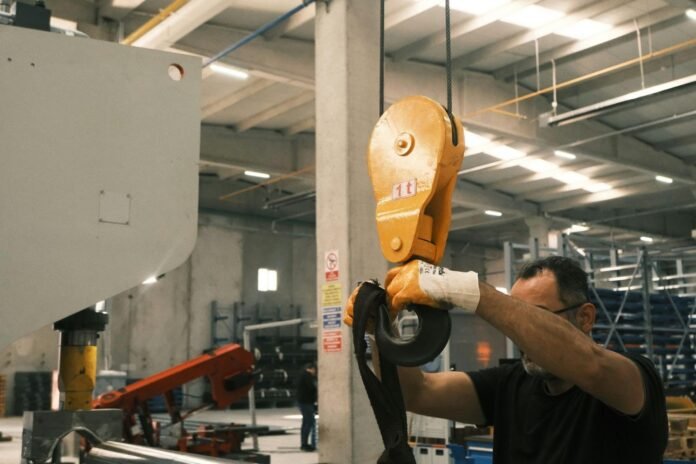The global industrial landscape is undergoing a seismic shift—one driven by the need for greater efficiency, resilience, and sustainability. At the heart of this transformation lies industrial automation, a concept that blends intelligent technologies with manufacturing and processing systems to create highly efficient, self-regulating operations. From reducing downtime to minimizing environmental impact, automation has evolved from a competitive advantage into a business necessity.
Table of Contents
What Is Industrial Automation?
Industrial automation refers to the use of control systems such as computers, robots, programmable logic controllers (PLCs), and artificial intelligence (AI) to operate equipment and processes in factories, power plants, and other industrial settings. Unlike traditional systems, which rely heavily on manual intervention, automated setups execute tasks with precision, consistency, and minimal human input.
Core components of an automated industrial environment include:
- Sensors and Actuators: Devices that detect real-time changes and initiate responses.
- PLCs and SCADA Systems: Controllers and interfaces that process data and manage operations.
- Human-Machine Interfaces (HMI): Tools that allow operators to interact with automated systems.
- AI and Machine Learning: Advanced technologies that enable predictive analytics and adaptive control.
The result? Enhanced productivity, improved product quality, and safer working conditions.
The Strategic Role of Automation in Modern Industry
Across various sectors—from automotive and aerospace to food processing and pharmaceuticals—automation is revolutionizing how businesses operate. Here are some of the strategic advantages:
1. Boosted Operational Efficiency
Automated systems can operate 24/7, minimizing downtime and accelerating production cycles. This leads to faster delivery times, lower labour costs, and increased throughput—vital for industries under constant demand pressure.
2. Improved Product Quality
By removing human variability from critical processes, automation ensures consistent quality. Sophisticated monitoring systems can detect even the slightest deviations, enabling immediate corrections and reducing waste.
3. Energy and Resource Optimization
Automation systems optimize the use of raw materials and energy. Variable frequency drives (VFDs), for instance, adjust motor speed based on load, preventing unnecessary energy consumption. This not only reduces operational costs but also supports sustainability goals.
4. Data-Driven Decision Making
Industrial automation platforms generate vast amounts of operational data. Through real-time monitoring and analytics, businesses can gain actionable insights—enabling everything from process optimization to proactive maintenance scheduling.
How Automation Supports Predictive Maintenance
One of the most valuable applications of automation is in maintenance. Traditional maintenance approaches are often reactive—waiting for breakdowns to occur. Predictive maintenance, enabled by sensors and analytics, flips this model by identifying potential failures before they happen.
Key benefits include:
- Reduced downtime: Early warnings allow teams to schedule repairs without disrupting production.
- Lower maintenance costs: By preventing major failures, predictive strategies cut long-term expenses.
- Longer equipment life: Consistent monitoring ensures machines operate within safe parameters.
These gains are especially crucial in asset-intensive industries like mining, oil & gas, and manufacturing, where equipment performance directly impacts profitability.
Enabling Sustainability Through Automation
Today’s industrial players are under increasing pressure to meet sustainability mandates. Automation offers a clear path to balancing production goals with environmental responsibility:
- Energy-efficient operations: Smart systems optimize heating, cooling, and motor speeds.
- Emission reduction: Automated processes are more precise, reducing waste and airborne pollutants.
- Smarter resource management: Real-time tracking helps minimize overuse of water, chemicals, and other inputs.
By integrating automation into their sustainability strategies, businesses can not only meet regulatory requirements but also build stronger brands and attract eco-conscious investors.
Real-World Applications Across Industries
Industrial automation is not confined to one sector. Its impact spans a wide range of industries:
Food & Beverage
In highly regulated environments like food production, automation ensures hygiene, accuracy, and repeatability. It enables batch consistency, precise ingredient mixing, and real-time tracking of perishables.
Oil & Gas
Automation plays a vital role in safety and efficiency in this high-risk industry. Sensors monitor pipeline pressure and temperature, while AI systems optimize pump performance and detect anomalies before they escalate into hazards.
Mining
Mines are adopting autonomous haul trucks, drill rigs, and ventilation systems. These automated solutions not only improve worker safety but also enhance ore recovery rates and reduce energy consumption.
Automotive
Modern car manufacturing plants are showcases of automation excellence—featuring robotic arms, conveyor systems, and advanced quality control technologies that work together in seamless harmony.
Overcoming Challenges in Automation Adoption
Despite its advantages, transitioning to industrial automation is not without challenges. Common barriers include:
- High initial investment: Automation can require significant upfront capital. However, long-term savings and efficiency gains typically outweigh these costs.
- Workforce reskilling: Employees need training to work alongside new technologies. Investing in workforce development is crucial for long-term success.
- Integration complexity: Bringing automation into legacy systems can be complex. A phased, well-planned approach can ease this transition.
Fortunately, advancements in plug-and-play systems, cloud-based controls, and modular automation make implementation more accessible than ever before.
Future Trends in Industrial Automation
As technology continues to evolve, industrial automation is poised to become even more intelligent, adaptive, and integrated. Some emerging trends include:
- Industrial Internet of Things (IIoT): Enhanced connectivity between machines, systems, and humans.
- Edge Computing: Local data processing that improves speed and reduces reliance on central systems.
- AI-Driven Optimization: Machine learning algorithms that continuously improve processes.
- Collaborative Robots (Cobots): Robots designed to work safely alongside human workers.
These innovations will further amplify the benefits of automation, helping industries navigate the demands of tomorrow’s economy.
Final Thoughts
Industrial automation is no longer a futuristic concept—it’s an immediate imperative. By embracing automation, businesses can unlock greater operational agility, ensure product consistency, and champion sustainability. Whether it’s through robotic process automation, smart sensors, or AI-powered analytics, automation is redefining how industries operate.
For companies looking to modernize their operations and future-proof their growth, investing in industrial automation is a strategic move toward smarter, safer, and more sustainable production.
Apart from that if you want to know about “Automation PCs and Panel PCs in Manufacturing and Automation” then please visit our Technology Category.
















